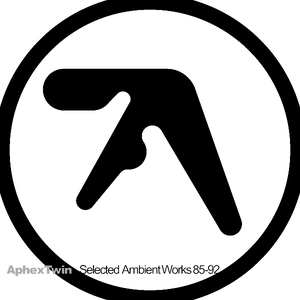House is a music genre characterized by a repetitive four-on-the-floor beat and a typical tempo of 120 beats per minute. It was created by DJs and music producers from Chicago's underground club culture in the early/mid 1980s, as DJs began altering disco songs to give them a more mechanical beat.
Breakbeat hardcore is a music genre that spawned from the UK rave scene during the early 1990s. It combines four-on-the-floor rhythms with breakbeats usually sampled from hip hop. In addition to the inclusion of breakbeats, the genre also features shuffled drum machine patterns, hoover, and other noises originating from new beat and Belgian techno, sounds from acid house and bleep techno, and often upbeat house piano riffs and vocals.

A rave is a dance party at a warehouse, club, or other public or private venue, typically featuring performances by DJs playing electronic dance music. The style is most associated with the early 1990s dance music scene when DJs played at illegal events in musical styles dominated by electronic dance music from a wide range of sub-genres, including drum and bass, dubstep, trap, break, happy hardcore, techno, hardcore, house, and alternative dance. Occasionally live musicians have been known to perform at raves, in addition to other types of performance artists such as go-go dancers and fire dancers. The music is amplified with a large, powerful sound reinforcement system, typically with large subwoofers to produce a deep bass sound. The music is often accompanied by laser light shows, projected coloured images, visual effects and fog machines.
Jungle is a genre of dance music that developed out of the UK rave scene and sound system culture in the 1990s. Emerging from breakbeat hardcore, the style is characterised by rapid breakbeats, heavily syncopated percussive loops, samples, and synthesised effects, combined with the deep basslines, melodies, and vocal samples found in dub, reggae and dancehall, as well as hip hop and funk. Many producers frequently sampled the "Amen break" or other breakbeats from funk and jazz recordings. Jungle was a direct precursor to the drum and bass genre which emerged in the mid-1990s.
Happy hardcore, also known as 4-beat or happycore, is a subgenre of hardcore dance music or "hard dance". It emerged both from the UK breakbeat hardcore rave scene, and Belgian, German and Dutch hardcore techno scenes in the early 1990s.
Breakcore is a style and microgenre of electronic dance music that emerged from jungle, hardcore, and drum and bass in the mid-to-late 1990s. It is characterized by very complex and intricate breakbeats and a wide palette of sampling sources played at high tempos.
Hardcore is a genre of electronic dance music that originated in the Netherlands in the early 1990s. It is distinguished by faster tempos and a distorted sawtooth kick, the intensity of the kicks and the synthesized bass, the rhythm and the atmosphere of the themes, the usage of saturation and experimentation close to that of industrial dance music. It would spawn subgenres such as gabber.
Techstep is a dark subgenre of drum and bass that was created in the mid-1990s.
Bouncy techno is a hardcore dance music rave style that developed in the early 1990s from Scotland and North England. Described as an accessible gabber-like form, it was popularised by Scottish DJ and music producer Scott Brown under numerous aliases.
Nasenbluten were an Australian electronic music group, formed in Newcastle in 1992. The group was made up of Aaron Lubinski, David Melo, and Mark Newlands, and released six studio albums before disbanding in 2001. They have been described as a significant influence on the breakcore genre.

Analogue Bubblebath, also released as Aphex Twin ep, is the first record by musician and producer Richard D. James. The EP was released under his alias The Aphex Twin through Mighty Force Records in September 1991. It was the inaugural release for the label, which at the time was a record shop in Exeter. The record was hugely influential on the development of electronic music, particularly techno and ambient techno. Its release has been described as a key event in the history of dance music. It is the first release in what became the Analogue Bubblebath series.

Thunderdome is a famous concept in hardcore techno and gabber music that was mainly used for a series of parties and CD-albums. It was organized by the Dutch entertainment company ID&T. The first party was organized in 1992 and the party held in December 2012 was advertised as being the end of Thunderdome. However, after the 2012 event, the party was brought back in 2017 for the 25th anniversary with a 2019 edition announced the following year. In 2022, Thunderdome celebrated its 30th anniversary at the Jaarbeurs convention centre, Utrecht.
Rotterdam Records was a Dutch record label founded by Paul Elstak in 1992. It released hardcore and gabber music. It stopped in 2012 and restarted again in 2018 with MP3 releases.

Don FM was a 1990s London pirate radio station, influential in the development of breakbeat hardcore, jungle and drum and bass music. It was the first jungle pirate station granted a temporary legal license.

Selected Ambient Works 85–92 is the debut studio album by Aphex Twin, the pseudonym of British electronic musician Richard D. James. It was released on 9 November 1992 through Apollo Records, a subsidiary of Belgian label R&S Records. The album consists of ambient techno tracks recorded onto cassette reputedly dating as far back as 1985, when James was thirteen to fourteen years old. Upon release it received widespread acclaim. It entered the UK Dance Albums Chart at No. 6 on 26 December 1992.
Techno is a genre of electronic dance music (EDM) which is generally produced for use in a continuous DJ set, with tempo often varying between 120 and 150 beats per minute (bpm). The central rhythm is typically in common time (4/4) and often characterized by a repetitive four on the floor beat. Artists may use electronic instruments such as drum machines, sequencers, and synthesizers, as well as digital audio workstations. Drum machines from the 1980s such as Roland's TR-808 and TR-909 are highly prized, and software emulations of such retro instruments are popular.

Frankie ‘Bones’ Mitchell is a prominent figure in the development of dance music in the US. Bones is widely regarded as the "Godfather of American Rave Culture"and is credited with helping to establish the underground dance music scene in New York City in the 1980s and 1990s. Bones started his music career in the early 1980s, spinning at clubs and parties throughout NYC. He gained widespread recognition for his role in organizing the first outdoor electronic music party in the US, known as “Storm Rave" which took place in Williamsburg, Coney Island, & Plumb Beach. Throughout his career, Bones has produced, remixed, and released countless tracks, albums, EP’s, and mixtapes. He has also performed at many large scale music festivals and events around the world such as the Love Parade in Berlin, Germany and Insomniac’s Electric Daisy Carnival located in Las Vegas, Nevada. Today, Frankie continues to be an influential figure in the dance scene and remains active as a performer, producer, and author represented globally by Southfirst Talent.
Gabber is a style of electronic dance music and a subgenre of hardcore techno, as well as the surrounding subculture. The music is more commonly referred to as Hardcore, which is characterised by fast beats, distorted & heavier kickdrums, with darker themes and samples. This style was developed in Rotterdam and Amsterdam in the 1990s by producers like Marc Acardipane, Paul Elstak, DJ Rob, and The Prophet, forming record labels such as Rotterdam Records, Mokum Records, Pengo Records and Industrial Strength Records. The image of the "Gabber" was based upon a method actor who was active in Rotterdam at the time, going by the name of "Opa Bert". Opa Bert was famous locally in the early 90's for always wearing tracksuits in combination with having a completely bald head. These features became a visual mainstay in the scene.

Ralph D'Agostino, better known as Ralphie Dee, is an American D.J. known for a career spanning disco, electronic and rave music. He was resident D.J. at 2001 Odyssey Disco in Brooklyn, New York at the time when "Saturday Night Fever" was filmed there. The movie was largely responsible for the popularization of disco lifestyle, and attracted numerous tourists to 2001 Odyssey starting in 1978 and through the 1980s. Many disco music hits were first heard there from the hands of DJ's such as Chuck Rusinak and D'Agostino. Many live recordings were done at 2001 and are available online.
Belgian hardcore techno is an early style of hardcore techno that emerged from new beat as EBM and techno influences became more prevalent in this genre. This particular style has been described as an "apocalyptic, almost Wagnerian, bombastic techno", due to its use of dramatic orchestral stabs and menacing synth tones that set it apart from earlier forms of electronic dance music. It flourished in Belgium and influenced the sound of early hardcore from Netherlands, Germany, Italy, UK and North America during the early-1990s, as a part of the rave movement during that period.







